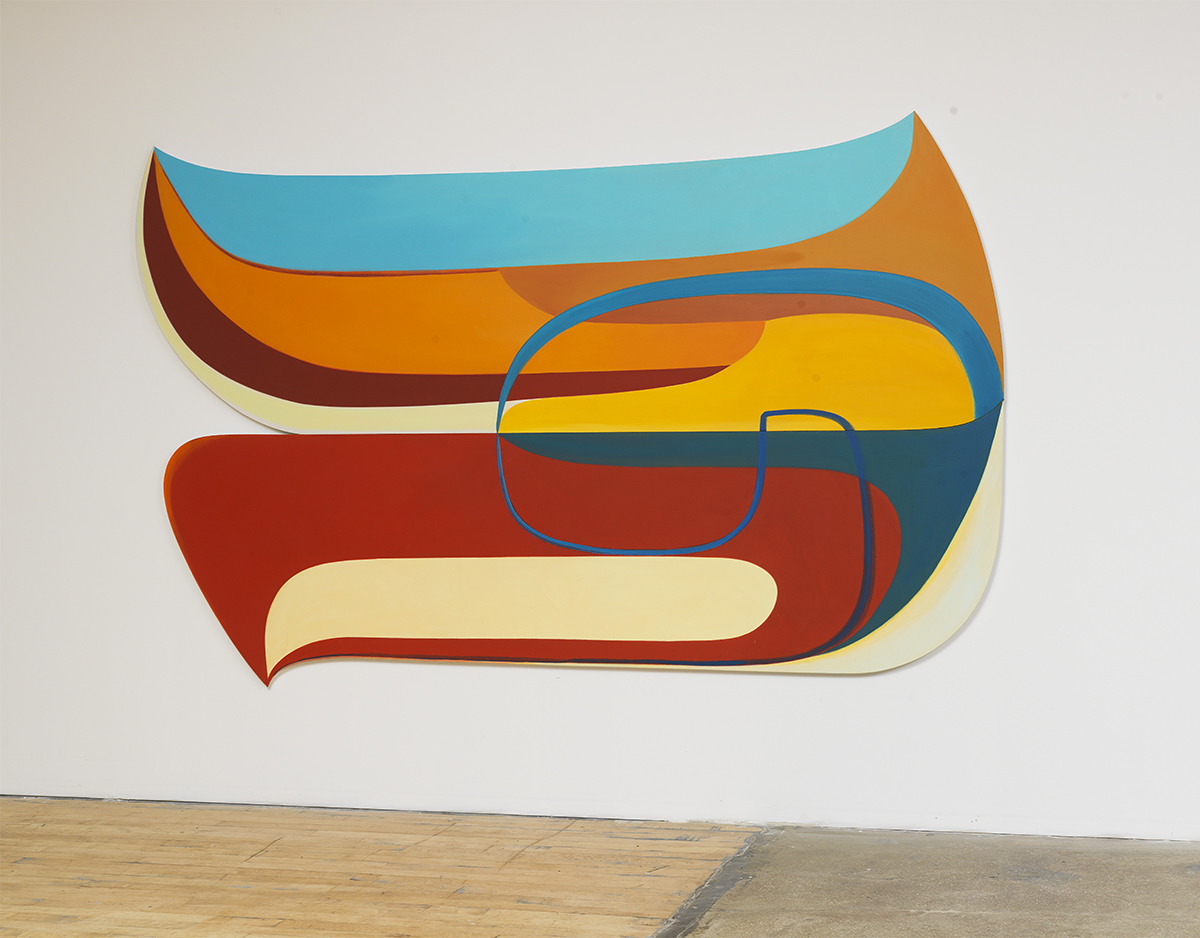by Margaret Graham
It is easy to be carried away by the undulating lull of the swoops and licks that characterize Joanna Pousette-Dart’s stunning compositions. The flat, imperfect crescents and loosely coiled ribbons that inhabit her stacked canvases convey a command of curvature, a language of movement that swings wide between grandeur and whimsy. Each arc both echoes and exalts beak and claw, hull and billowing sale, mesa and gorge, winding river and crest of the wave; an ear tilted, straining toward a half-heard sound; arms, raised or reaching, toward the distant horizon. Her palettes juxtapose desert and sky, unraveling the landscape like a clew. The contrasts are stark yet smartly so: in 2 Part Variation (Red, Yellow, Blue) (2012-13), burnt umber and rust red are sent reeling against creamy eggshell white, soft canary yellow, and crisp, bright shades of blue. The effect is seductive but slanted, a marriage of color and movement evocative of Kandinsky, who, it seems, anticipated this painting nearly a century ago:
Blue, Blue got up, got up and fell.
Sharp, Thin whistled and shoved, but didn’t get through.
From every corner came a humming.
Fat Brown got stuck—it seemed for all eternity.
It seemed. It seemed.
You must open your arms wider.
Wider. Wider.
And you must cover your face with red cloth.
And maybe it hasn’t shifted yet at all: it’s just that you’ve shifted.
White leap after white leap.
And after this white leap another white leap.
And in this white leap a white leap. In every white leap a white leap.
But that’s not good at all, that you don’t see the gloom: in the gloom is
where it is.
That’s where everything begins. . . . . . . . . . . . . . . . . . . . .
With a. . . . . . . . . . . . . . . . . . . . . . Crash. . . . . . . . . . . . . .1
- “Seeing,” Wassily Kandinsky, 1912
